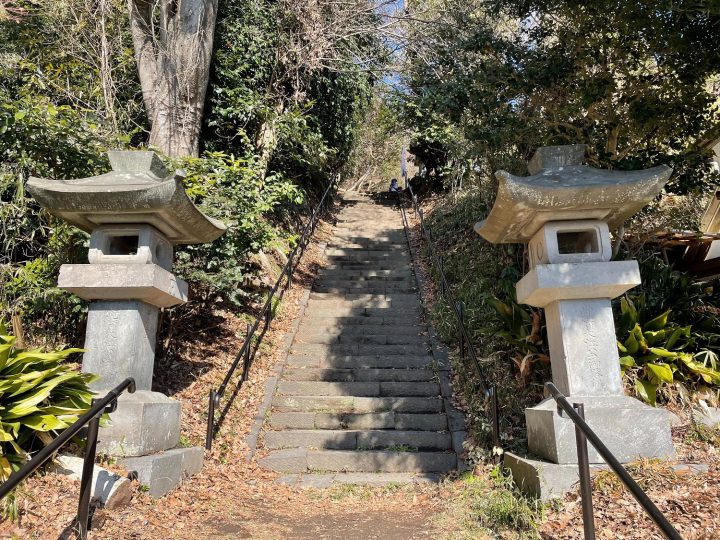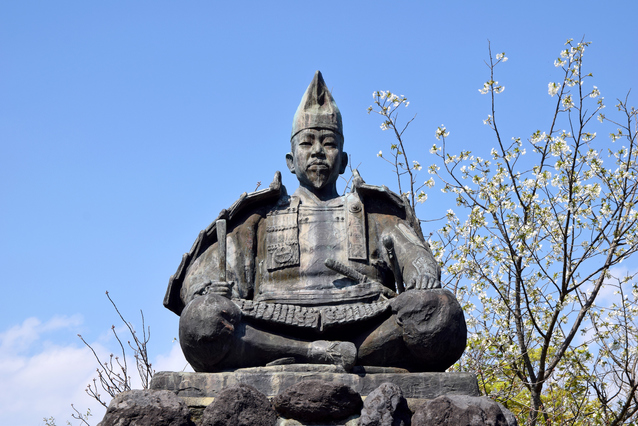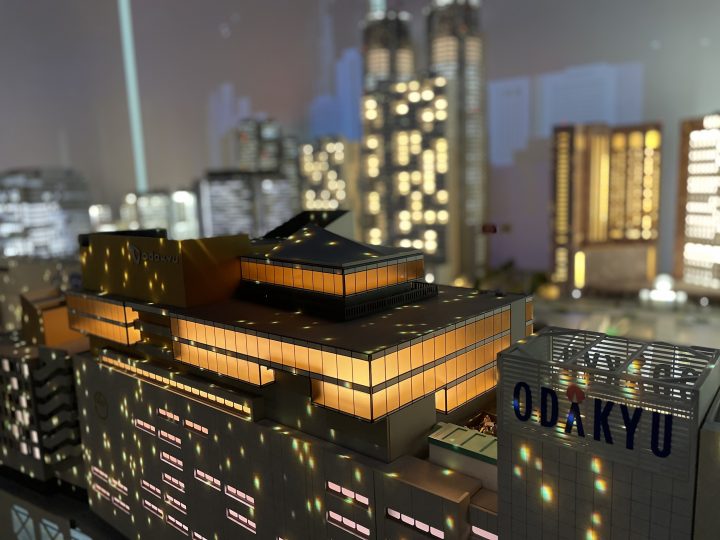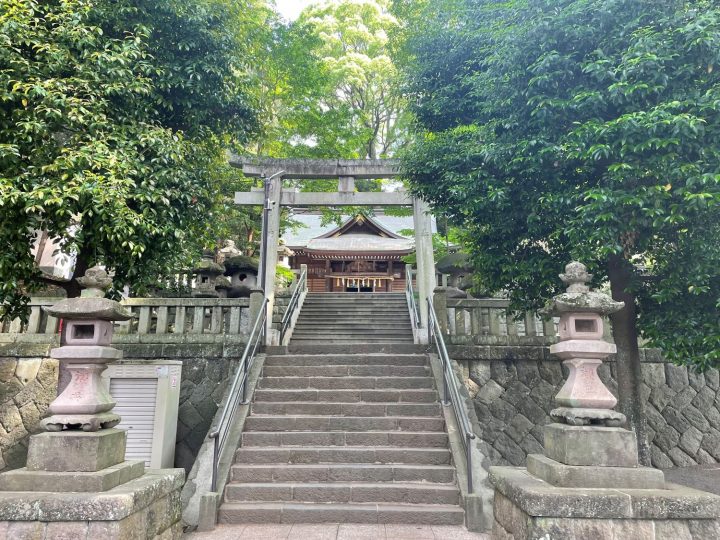Kamakura Shogun and places associated with him - Extra edition

Although they were not listed in the Council of 13, there were many people who contributed to the subjugation of the Taira clan and the establishment of the Kamakura Shogunate. This time, as a special edition, we will focus on people other than the 13 and introduce places in Kanagawa Prefecture associated with them.
The first person is Doi Sanehira.
When Yoritomo, who had raised an army to defeat the Taira clan, was defeated in the Battle of Ishibashiyama, it was Doi Sanehira who helped Yoritomo. His loyalty earned him the trust of Minamoto no Yoritomo, and he was even appointed as the magistrate of the Kamakura army and the guardian of the three provinces of Kibi, Nagato, and Suo during the subjugation of the Taira clan. He is said to have died in November 1191 (there are various theories), but if he had survived, he may have participated as one of the 13 elders.
Spot 1: Jyoganji Temple

It is located about 500 meters up the mountain north of Yugawara Station after getting off at Yugawara Station. It originated from the fact that Doi Sanehira built a Buddhist altar in hopes of the everlasting prosperity of his clan. The current sect is Soto Zen (it has been converted several times in the past), but the statues of Doi Sanehira and Toohira, the statues of the seven horsemen engraved with the achievements of Doi Sanehira, who set sail from the coast of Manazuru in the Toi domain with only seven horsemen (the Seven Horsemen Fall) to Awa after the defeat at Ishibashiyama and later supported the great achievement of establishing a samurai government, and the Shichikido Hall and the graves of the Doi clan suggest that it has a deep connection with the Toi clan.
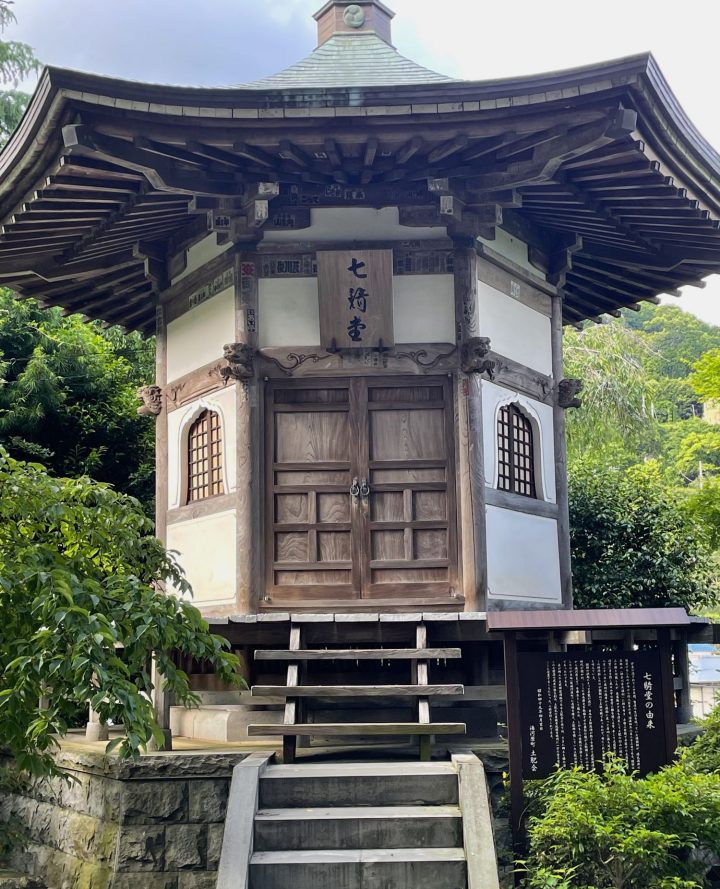
Shichikido

A 900-year-old Byakushin tree (designated as a natural monument by the Ministry of Education)
Jōganji Temple 📍252 Shirobori, Yugawara-machi, Ashigarashimo-gun, Kanagawa Prefecture, 259-0305
Spot 2 Gosho Shrine
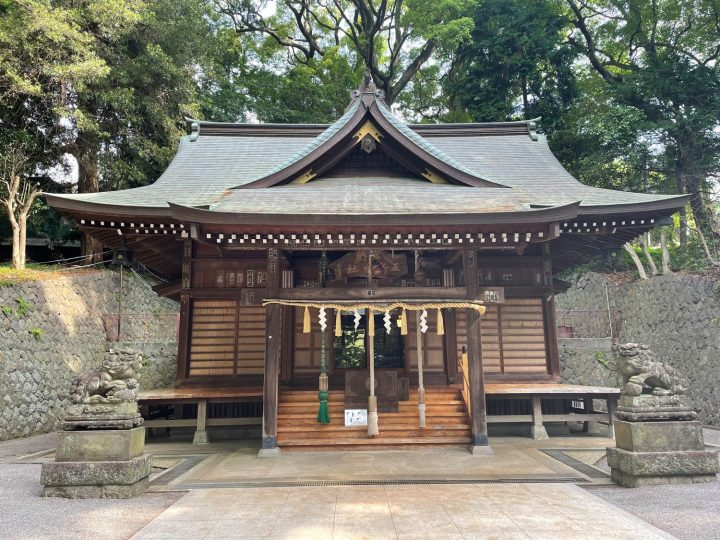
Gosho Shrine
The shrine is located about 1 km southwest of Yugawara Station. It was founded during the reign of Emperor Tenchi (626-672) and was revered by the Tohi clan and other local people. It is said that in 1060, Arai Sanetsugu, who accompanied Minamoto no Yoshiie on his European expedition under the protection of Gosho Shrine, achieved military success here, and the shrine is also associated with the Minamoto clan. When Minamoto no Yoritomo raised his army in 1180, Doi Sanehira is said to have placed his sword here and performed a goma ritual here to pray for victory in battle.
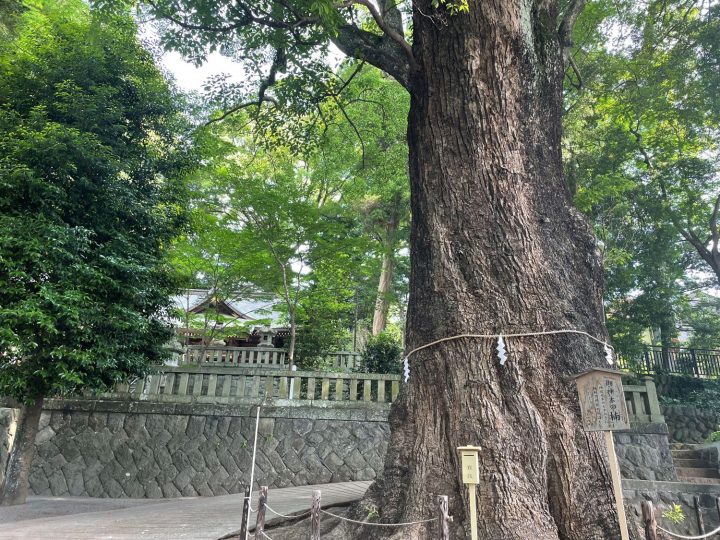
Sacred Tree
Gosho Shrine 📍359-1 Miyashita, Yugawara-cho, Ashigarashimo-gun, Kanagawa Prefecture, 259-0304
The second person was Shigetada Hatakeyama.
He was known as the "model warrior of the Kanto region" for his high level of education, bravery, and character. When Minamoto no Yoritomo raised his army, he fought on the side of the Taira clan. He later served on Minamoto no Yoritomo's side, achieving great success in the subjugation of the Taira clan and the conquest of Europe. Combined with his upright and honest character, he became one of the "model warriors of the Kanto region" that everyone respected. However, even such a man as Hatakeyama Shigetada was inevitably drawn into the political strife of Kamakura, and in the end he was framed for treason and killed by Hojo Yoshitoki in what is now Asahi Ward, Yokohama.
Spot 1: Tsurugamine and Futamatagawa Battlefield
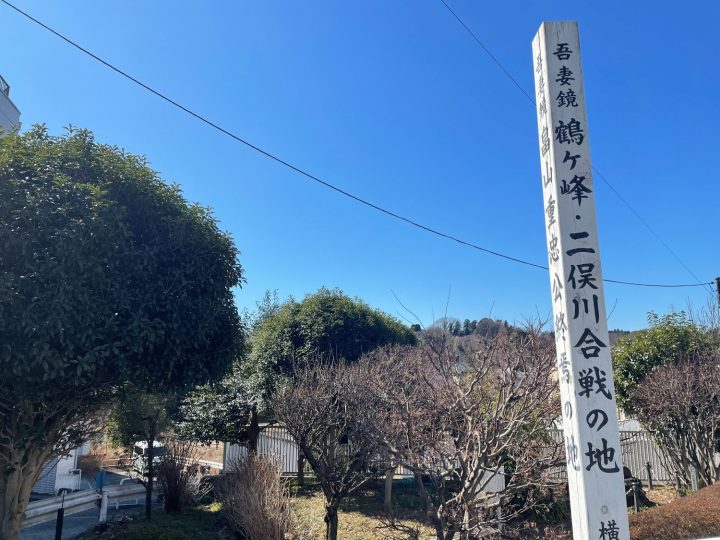
Shigeyasu, the son of Hatakeyama Shigetada, had an argument at a drinking party with Hiraga Tomomasa, the son-in-law of Maki no Kata, the second wife of Hojo Tokimasa. Maki no Kata took a grudge against Hojo Tokimasa and asked him to punish Hatakeyama Shigetada. Hojo Masako and Yoshitoki opposed, saying "There is no way Hatakeyama Shigetada would rebel," but in the end, the third shogun, Minamoto no Sanetomo, gave the order to subjugate Hatakeyama Shigetada. At that time, Hatakeyama Shigetada was on his way to Kamakura from his castle in Sugaya, Musashi Province, after receiving a message saying "There has been an incident in Kamakura, so please head there immediately." Then, Hatakeyama Shigetada's army fought a battle with the punitive army (led by Hojo Yoshitoki) that had left Kamakura at Tsurugamine and Futamatagawa (present-day Asahi Ward, Yokohama City). Hatakeyama Shigetada's army, consisting of only a hundred or so soldiers, fought bravely against the Kamakura army of tens of thousands, but was no match for them, and in the end, it is said that he and his family committed suicide.
Thus, Hatakeyama Shigetada, a model Kanto warrior, was killed, but this incurred the dissatisfaction of many Kanto warriors, and was one of the major reasons why Hojo Tokimasa and Maki no Kata were later exiled from Kamakura.
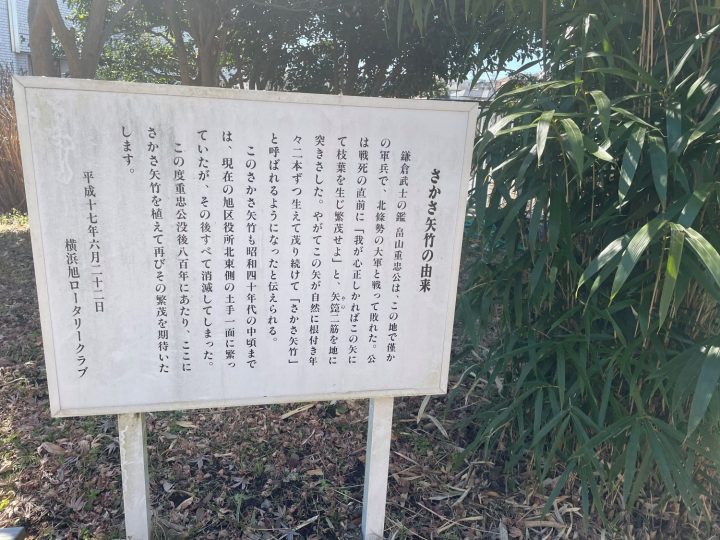
Upside down arrow bamboo
Tsurugamine-Futamatagawa Battlefield Site 📍1-1 Tsurugamine Honmachi, Asahi-ku, Yokohama, Kanagawa Prefecture, 241-0021
Over the past few articles, we have introduced places in Kanagawa Prefecture that are associated with "Kamakuradono."
Kanagawa Prefecture is home to many locations that have played an important role in history, including as the political center during the Kamakura period and as a symbol of modern civilization since the Meiji period.
Why not visit historical sites and historic sites and experience the many charms of Kanagawa?
*Please note that there are various theories regarding the contents of this column.
Check out past articles
Tour the places associated with the Kamakura Shogun
A place associated with Hojo Yoshitoki
Touring places associated with Hojo Tokimasa and Kajiwara Kagetoki
Places associated with the Kamakura Shogunate - Visiting places associated with Miura Yoshizumi and Wada Yoshimori
Places associated with the Kamakura Shogunate - Visiting places associated with Oe Hiromoto and Adachi Morinaga
